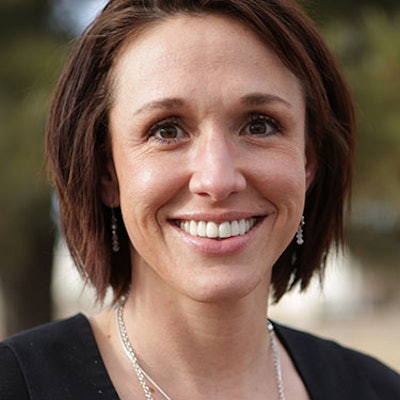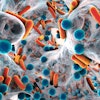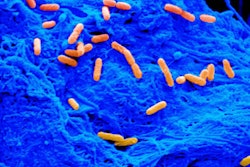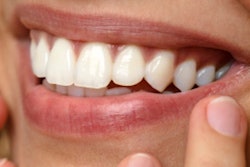
There has been much to discuss about how COVID-19 has changed dentistry. That includes infection control guidance.
With September being Dental Infection Control Awareness Month, we wanted to highlight a part of the practice's infection control duties that often gets overlooked: dental unit water lines (DUWLs). With that in mind, I sat down with Kellie Thimmes, a senior consultant and education specialist with Colorado's ProEdge Dental Water Labs to talk about what they are seeing from dental practices after they reopened following the COVID-19 business disruption and what practices need to be doing to protect their patients moving forward.
 Kellie Thimmes of ProEdge Dental Water Labs. Image courtesy of ProEdge.
Kellie Thimmes of ProEdge Dental Water Labs. Image courtesy of ProEdge.Q: I know you told me that you believe COVID-19 created the "perfect storm" for bacterial contamination inside dental unit water lines. What does that mean?
A: After practices reopened following the COVID-19 closure, a lot of people were calling in to ProEdge and asking us if the virus can grow in the water bottles and the water lines. That's unknown. There's so much unknown about it, but when we asked the brightest minds on this, they said there was zero evidence of that.
However, that's not really the problem. The problem is that people were gone for an extended period of time because the offices were shut down, other than seeing maybe an emergency here and there. With that, they weren't using their water lines as they normally would. The shutdown led to an increase in stagnation, which led to an increase in biofilm development, and that's where the perfect storm for water lines comes in. Biofilm inside dental water lines creates the best opportunity for pathogenic bacteria like Mycobacterium, Pseudomonas aeruginosa, and Legionella to attach and spread. That's the bacteria that we're worried about.
Q: So dentists and dental team members came back and reopened their practices after the COVID-19 shutdown. The bacteria were sitting there in the water lines. What should they have done, and should they be doing something now?
A: Most, if not all, products for water lines said to purge the lines prior to COVID-19 shutdowns. Purging is trying to get all of the water out of the lines and into your bottles. However, we know there were some practices that didn't have time to do that or they didn't know how to do that properly, so water or moisture in the water lines just sat there, resulting in some bacteria.
Now that practices have reopened, it's really important to shock those lines, and to shock with something that is effective, and then to test. They need to test right away to show that the shock was effective and that their lines are clean.
Q: Let's say somebody is reading this and they think, "Well, we did not do that." What do they need to be doing right now?
A: Shocking with an effective protocol is going to be the main thing. Shocking cleans the inside of water lines. Next is to test. They could test without shocking, but the test is very likely to fail. You want to do what it takes to remedy the situation COVID-19 shutdowns created and verify that, so you know patients are safe.
I talked to a dedicated dental professional earlier today and told her you can't go back and change what you didn't do, but you can start now by shocking the lines with something that's going to be really effective and verify that it was enough to meet the guidelines.
There are a couple of protocols that we suggest, depending on the type of equipment that you have, and I'd be happy to talk to any practice about their unique situation and walk them through the options we've seen work time and again.
Yes, some practices have been open for a while and didn't take the needed actions, but it's never too late to actually start this and get a great protocol in place.
Q: How do you instill in practices how important this is, with all the new protocols and everything they're already keeping up with right now?
A: There is so much that practices have to do after COVID-19. I reviewed the latest interim U.S. Centers for Disease Control and Prevention (CDC) guidance, and there's so much in the realm of infection control within dentistry, but water lines often get overlooked. They're easy to overlook because there's so much to do.
While no one wants a pandemic, the silver lining is that it did bring out an awareness of how important it is to make sure that water lines are clean and that we're following all infection control guidelines. Part of that is making sure that the pathogenic bacteria that could grow in our lines do not. We want to take that out of the equation. Dental practices already have enough to deal with -- they can't have Mycobacterium abscessus or any other harmful bacteria inside DUWLs be the hidden problem.
We had a lot of first-time DUWL testers reach out to us after their practices opened back up. I talked to a dentist who just got out of dental school two years ago, and she told me they were never taught to shock or test the lines. She and so many others don't know, and I believe this has opened a lot of people's eyes to a problem that was lurking in their practice.
Q: This is Dental Infection Control Awareness Month, so I think there's a heightened sense of infection control with that declaration and COVID-19 still around. But, to me, it also seems like DUWLs are often the overlooked part of infection control. Is that what you see as well?
A: Oh, absolutely. They are easy to overlook. I know prior to working here, I never thought about dental unit water lines as being a problem. I saw them when I went to the dentist. I saw a whole bunch of water lines, but I never thought about having to worry about the water going into my mouth. I can see where it can easily be overlooked. People think of it as just one more thing they have to do in the practice, but it's one more really important thing that gets overlooked. Too many patients have gotten sick, and we want to do all we can to ensure not one more person is added to the list.
The comments and observations expressed herein do not necessarily reflect the opinions of DrBicuspid.com, nor should they be construed as an endorsement or admonishment of any particular idea, vendor, or organization.



















